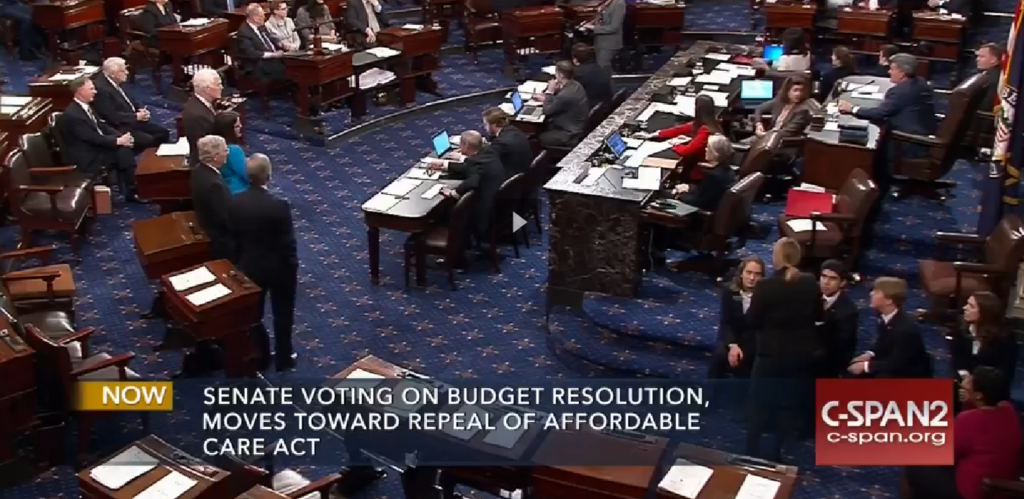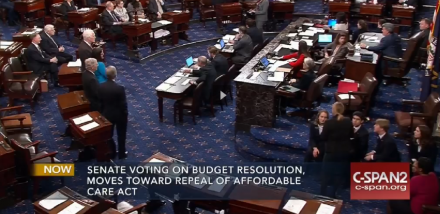Abortion rights, women of color, and LGBTQIA+ people are under attack. Pledge to join us in fighting for gender justice.
No, Congress Hasn’t Repealed Obamacare – Yet.

 If you—like most individuals—happened to be sleeping last night around 1:30 AM EST, you might have missed members of the U.S. Senate making final votes to lay the procedural groundwork to repeal the Affordable Care Act (ACA)—also known as “Obamacare.”
If you—like most individuals—happened to be sleeping last night around 1:30 AM EST, you might have missed members of the U.S. Senate making final votes to lay the procedural groundwork to repeal the Affordable Care Act (ACA)—also known as “Obamacare.”
Intent on making good on campaign promises to repeal the health care law, senators—many of whom showed extraordinary stamina during a seven-hour succession of votes known as Vote-A-Rama—enthusiastically pontificated, berated each other, and made passionate pleas for and against the ACA—ending with a final vote 51 to 48 to take the next step towards repeal.
BUT, the ACA was not actually repealed last night—Vote-A-Rama is more of a Senate procedural exercise attached to the Budget Resolution process. The Budget Resolution is basically a shell of a bill that outlines spending limits. It is an agreement between the House and the Senate about how money will be spent (like a household budget for Congress) and provides a framework for what is to come in later budget action.
The Budget Resolution also tasks committees that handle health care to come up with spending recommendations to be approved by the Budget Committee. Then, a Budget Reconciliation bill is finalized that will be the bill through which the ACA could be repealed.
So, why use this crazy process rather than just voting to repeal the ACA outright? Because this process only needs a simple majority to pass in the Senate, rather than 60 votes to overcome a filibuster. But that doesn’t mean supporters of the ACA aren’t without strategies to fight back.
Enter Vote-a-Rama. After a limit of 20 hours of debate, the only way to prolong a final vote on the Budget Resolution is through the amendment process—which is why there was a stream of amendments, including those from champions of the ACA that ran 7 hours long. While the votes on these amendments don’t impact the ACA—they send a signal about where senators stand on the law.
For instance, Senate Gillibrand championed an amendment to protect the ACA’s provisions related to women’s health, including: ending discrimination based on pre-existing conditions (like prior pregnancies), ending the practice of charging women more than men for health insurance, and covering important women’s preventive services, like breast cancer screenings and contraception, without out-of-pocket costs. But, this amendment failed, as did other amendments supporting popular provisions of the law, such as allowing young adults to stay on their parents’ health insurance until age 26 and children’s health insurance coverage.
While the votes on these amendments don’t have any impact on the ACA—they signal what is to come and what we all stand to lose if the law is repealed.
The passionate speeches on the floor last night—and this morning—were not political showmanship, they reflect recognition of the real impact on the health and economic security of everyday people if health coverage and consumer protections guaranteed by the ACA are stripped away.
Vote-A-Rama is truly a marathon, but the fight to protect the ACA has just begun.




